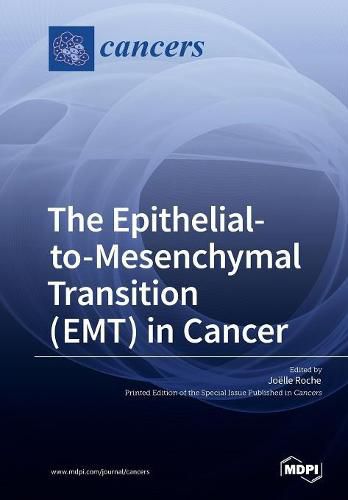Readings Newsletter
Become a Readings Member to make your shopping experience even easier.
Sign in or sign up for free!
You’re not far away from qualifying for FREE standard shipping within Australia
You’ve qualified for FREE standard shipping within Australia
The cart is loading…






This title is printed to order. This book may have been self-published. If so, we cannot guarantee the quality of the content. In the main most books will have gone through the editing process however some may not. We therefore suggest that you be aware of this before ordering this book. If in doubt check either the author or publisher’s details as we are unable to accept any returns unless they are faulty. Please contact us if you have any questions.
The epithelial-to-mesenchymal transition (EMT) is a highly dynamic process with multiple transitional states, by which epithelial cells can convert into a mesenchymal phenotype. This process involves loss of cellular adhesion and cellular polarity, and an improvement in migratory and invasive properties. It occurs during normal embryonic development, tissue regeneration, organ fibrosis, and wound healing. It is also involved in tumor progression with metastatic expansion, and plays a major role in resistance to cancer treatment. In cancers, EMT inducers are hypoxia, cytokines and growth factors secreted by the tumor microenvironment, stroma crosstalk, metabolic changes, innate and adaptive immune responses, and treatment with antitumor drugs. Switch in gene expression from epithelial to mesenchymal phenotype is triggered by complex regulatory networks involving transcriptional control, non-coding RNAs, chromatin remodeling and epigenetic modifications, alternative splicing, post-translational regulation, protein stability and subcellular localization. Reversion of EMT, the mesenchymal-to-epithelial transition (MET), affects circulating cancer cells when they reach a desirable metastatic niche to develop secondary tumors. More knowledge and control of EMT to MET is necessary and will be beneficial for patients for cancer treatment. This current Special Issue entitled Epithelial to Mesenchymal Transition in Cancer will address these questions.
$9.00 standard shipping within Australia
FREE standard shipping within Australia for orders over $100.00
Express & International shipping calculated at checkout
This title is printed to order. This book may have been self-published. If so, we cannot guarantee the quality of the content. In the main most books will have gone through the editing process however some may not. We therefore suggest that you be aware of this before ordering this book. If in doubt check either the author or publisher’s details as we are unable to accept any returns unless they are faulty. Please contact us if you have any questions.
The epithelial-to-mesenchymal transition (EMT) is a highly dynamic process with multiple transitional states, by which epithelial cells can convert into a mesenchymal phenotype. This process involves loss of cellular adhesion and cellular polarity, and an improvement in migratory and invasive properties. It occurs during normal embryonic development, tissue regeneration, organ fibrosis, and wound healing. It is also involved in tumor progression with metastatic expansion, and plays a major role in resistance to cancer treatment. In cancers, EMT inducers are hypoxia, cytokines and growth factors secreted by the tumor microenvironment, stroma crosstalk, metabolic changes, innate and adaptive immune responses, and treatment with antitumor drugs. Switch in gene expression from epithelial to mesenchymal phenotype is triggered by complex regulatory networks involving transcriptional control, non-coding RNAs, chromatin remodeling and epigenetic modifications, alternative splicing, post-translational regulation, protein stability and subcellular localization. Reversion of EMT, the mesenchymal-to-epithelial transition (MET), affects circulating cancer cells when they reach a desirable metastatic niche to develop secondary tumors. More knowledge and control of EMT to MET is necessary and will be beneficial for patients for cancer treatment. This current Special Issue entitled Epithelial to Mesenchymal Transition in Cancer will address these questions.